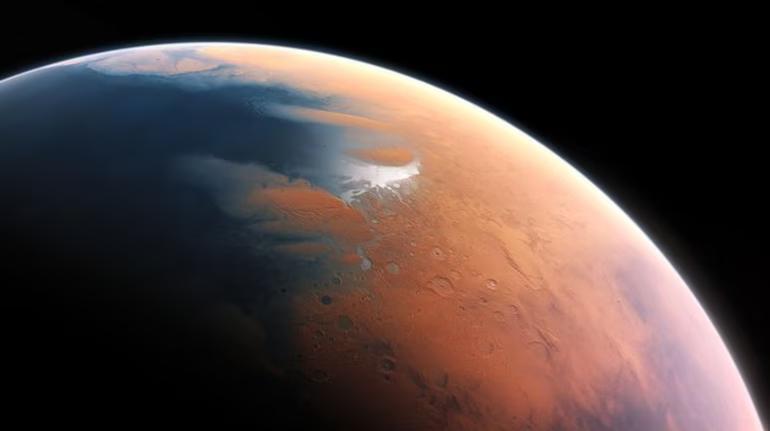
Mars may have once had rain & snowfall, finds new study
The red planet, Mars, has long been a subject of fascination and intrigue for scientists and space enthusiasts alike. With its barren, rocky landscape and thin atmosphere, Mars is often thought of as a dry and lifeless world. However, a recent study by the University of Colorado Boulder has shed new light on the planet’s past, suggesting that Mars may have once experienced rainfall and snowfall, feeding valleys and channels.
The study, published in the journal Science, analyzed data from NASA’s Mars Reconnaissance Orbiter and found evidence of ancient riverbeds and lakebeds on the planet’s surface. The researchers used a combination of computer simulations and geological analysis to reconstruct the Martian environment during a period known as the Hesperian epoch, which occurred around 4 billion years ago.
During this time, the researchers suggest that Mars’ atmosphere was much thicker and more hospitable to liquid water than it is today. This is because the planet’s magnetic field was stronger, which allowed it to trap more heat and create a warmer climate. The study’s lead author, Dr. Alison Murray, explained that “the presence of liquid water on Mars is a key ingredient for life, so it’s exciting to think that Mars may have once been a more Earth-like planet.”
The researchers found that the water on Mars during the Hesperian epoch was likely fed by rain and snowfall, which flowed into valleys and channels. This is in contrast to the current Martian environment, where water is mainly found in the form of ice at the poles and mid-latitudes.
The study’s findings have significant implications for our understanding of the Martian past and the possibility of life on the planet. If Mars once had a watery environment, it’s possible that life could have emerged and thrived on the planet. The discovery of ancient riverbeds and lakebeds suggests that the planet may have had a more Earth-like environment, with flowing water and a stable climate.
The researchers used a combination of computer simulations and geological analysis to reconstruct the Martian environment during the Hesperian epoch. They created a virtual model of the planet’s surface and atmosphere, and then used it to simulate the flow of water on the planet. They also analyzed data from NASA’s Mars Reconnaissance Orbiter, which has been studying the planet’s surface since 2006.
The study’s findings are supported by previous research, which has suggested that there is evidence of water on Mars around 4 billion years ago. For example, NASA’s Curiosity rover, which has been exploring Mars since 2012, has found evidence of ancient lakebeds and riverbeds on the planet’s surface.
The discovery of water on Mars is a significant step forward in our understanding of the planet’s past and the possibility of life on the planet. While the study’s findings are exciting, they also raise more questions than answers. For example, where did the water come from? Was it delivered to Mars by comets or meteorites, or did it originate from the planet’s interior?
The study’s lead author, Dr. Alison Murray, acknowledged that there is still much to be learned about Mars’ past and the possibility of life on the planet. However, she emphasized that the discovery of water on Mars is a significant step forward in our understanding of the planet and its potential for supporting life.
In conclusion, the study’s findings suggest that Mars may have once had rain and snowfall, feeding valleys and channels. The discovery of ancient riverbeds and lakebeds on the planet’s surface provides strong evidence of a watery environment in the past. While the study’s findings are exciting, they also raise more questions than answers. Further research is needed to uncover the secrets of Mars’ past and the possibility of life on the planet.






